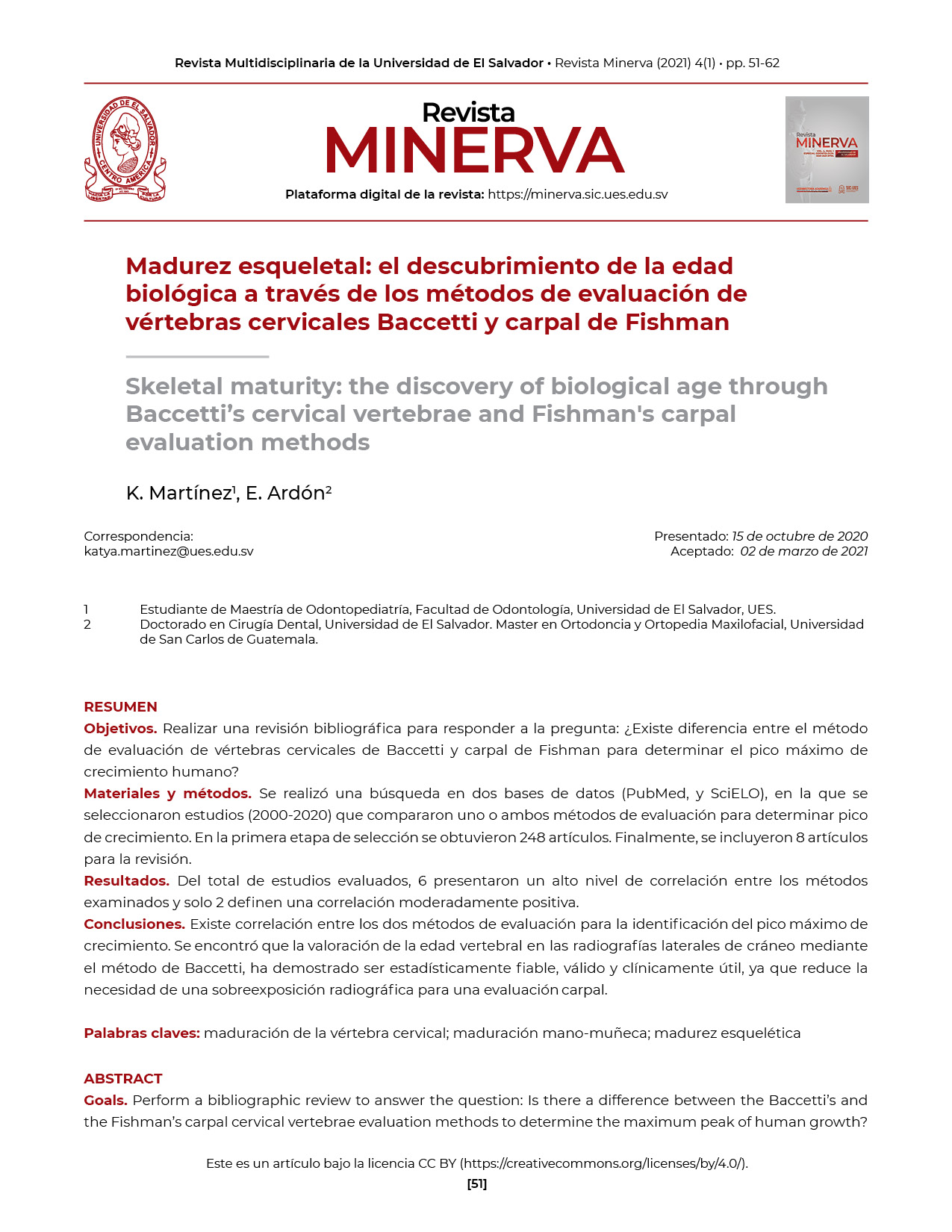Abstract
Objective. Conduct a literature review to answer the question: Is there a difference between the Baccetti and Fishman's carpal cervical vertebrae evaluation method to determine the maximum peak of human growth.Materials and methods. A search was carried out in two databases (PubMed, and SciELO), in which studies (2000-2020) were selected
that compared one or both evaluation methods to determine peak growth. In the first selection stage, 248 articles were obtained.
Finally, 8 articles were included for review.
Results: Of the total of evaluated studies, 6 presented a high level of correlation between the examined methods and only 2 defined
a moderately positive correlation.
Conclusions. There is a correlation between the two evaluation methods for the identification of the maximum growth peak. It was
found that the assessment of vertebral age in lateral skull radiographs using the Baccetti method has proven to be statistically
reliable, valid and clinically useful, reducing the need for radiographic overexposure for carpal evaluation.

This work is licensed under a Creative Commons Attribution 4.0 International License.
Copyright (c) 2021 Authors who publish in Revista Minerva agree to the following terms: Authors continue as owners of their work, assigning only dissemination rights to Minerva Magazine under the standards of the Creative Commons Attribution 4.0 International License (CC BY 4.0). This license allows others to mix, adapt and build upon the work for any purpose, including commercially, and although new works must also acknowledge the initial author, they do not have to license derivative works under the same terms.




